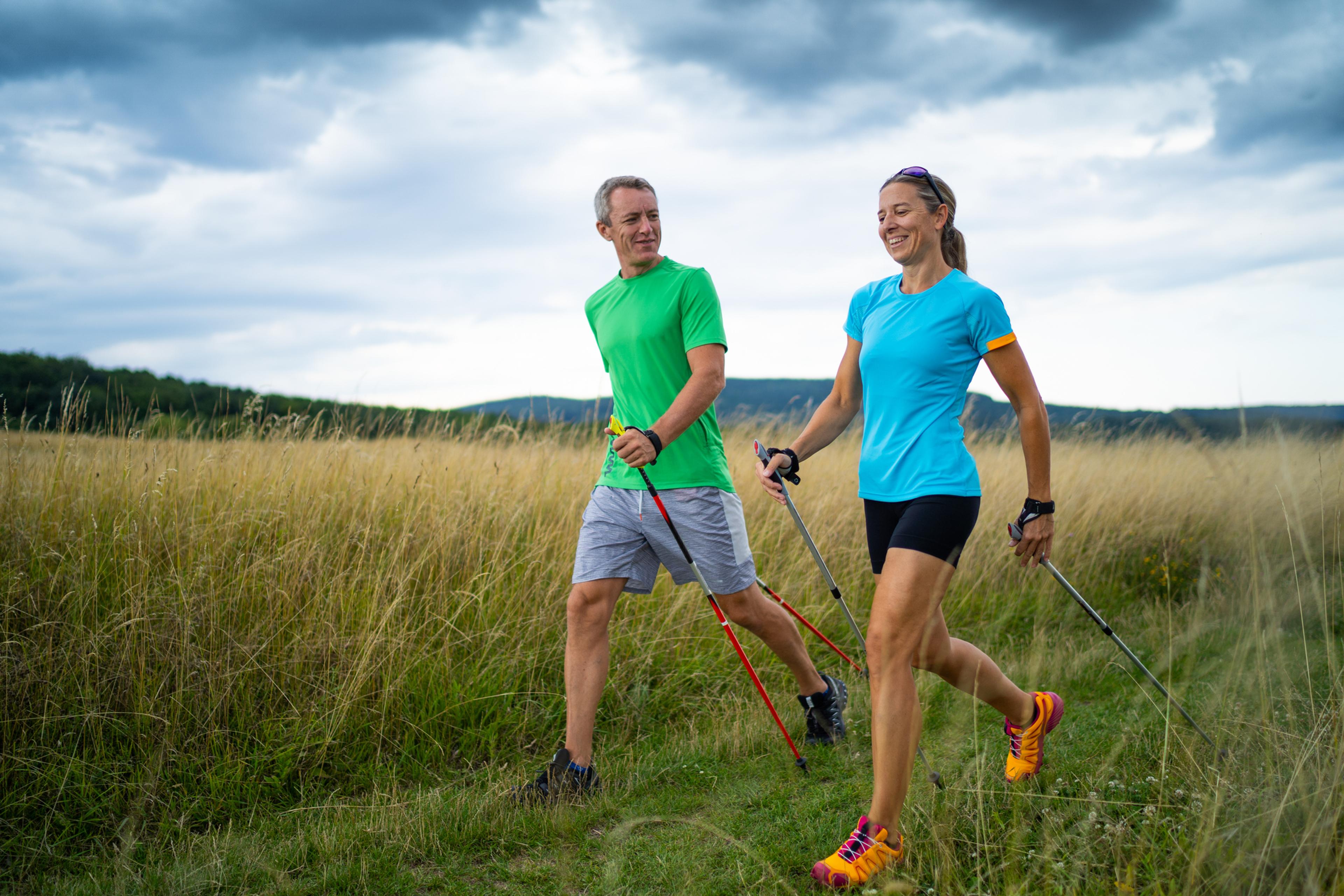Nordic Walking Provides a Full-Body Workout
Jake Newby
| 4 min read

What started as a summer training regimen in Finland to prepare for the winter skiing season is now one of North America’s hottest fitness trends.
Nordic walking is a full-body workout that can undoubtedly be filed under the “harder than it looks” category of exercise routines, but as long as you go at your own case, it’s suitable for pretty much everyone. It combines cardiovascular exercise with a vigorous muscle workout. While standard walking works the muscles below the belt – like the hamstrings, glutes, and calves – Nordic walking incorporates hand-held poles that propel you forward. This motion activates muscles in the upper-body area.
It’s an exercise that engages 80% to 90% of your muscles as opposed to the 50% of muscles that standard walking engages. As you can probably imagine, it’s a good way to burn a lot of calories.
What are the benefits of Nordic walking?
Nordic walking researchers have done their homework. Multiple studies confirm the following physical benefits:
It’s a more complete workout than walking: Hours after a Nordic walking session, expect to feel it in your back, chest, core, shoulders, arms and of course, leg muscles. Research shows that Nordic walking can increase both hand-grip strength and upper extremity strength, particularly in the shoulders.
It burns calories: This souped-up style of walking burns more calories than regular walking. According to Harvard Health, Nordic walking can burn between 18% to 67% more calories than conventional walking.
It improves balance: The Nordic walking poles provide stability and can prevent falls. Anyone dealing with balance problems is a candidate for Nordic walking.
It’s a heart-healthy workout: A 2022 study published in the Canadian Journal of Cardiology found that Nordic walking may improve heart function. This 12-week study determined that Nordic walking was superior compared to other exercises in improving functional capacity – or the ability to perform physical activities – among heart disease patients.
How to start Nordic walking
Nordic walking starts with your credit card. Visit a sporting goods store or shop online for Nordic poles, which include a glove-like system attached to the pole that allow you to slide your palm into them. They are made from either lightweight aluminum or carbon, and have pointed tips suited for trails, or rubber tips suited for sidewalk. You can adjust them to align with your height. Nordic poles range in price from $20 to over $100 for high-end ones.
Nordic walking technique and form
Beginners can lean on the American Nordic Walking Association’s (ANWA) advice to learn basic technique. The ANWA states that when you walk normally and carry poles with you, it is called the “two-wheel drive.” Once you grip the poles properly and start using your upper body, you’re in “four-wheel drive” and you’ve reached new heights.
Every step should begin with the heel touching the ground and rolling forward to the ball and toe area, according to the ANWA, in which you plant to push off and propel yourself forward.
The ANWA also states that your hand should always be in a “grip-and-go” state with the pole. They should grip the pole each time the pole touches the ground. Then, release it as it is drawn back behind the body, finishing up with an open hand.
As the arms continue to move the poles, the torso and hips should engage in a counter-swinging motion from the lower body. This works the mid-torso muscle groups. Focus on good posture with your chin up and shoulders, back and chest out.
These techniques are no-no’s:
- Walking with close hands.
- Walking with open hands.
- Planting the poles too far from the body.
- Improper leg and pole placement (placing the poles and your legs on the same side).
- Staying in “two-wheel drive” and failing to utilize your torso muscles.
Nordic walking is safe for almost anyone to try, but it is not recommended to a person recovering from an upper-body injury. The movements could cause reaggravation because of the stress they put on the shoulder, wrist and elbow joints.
Chat with your primary care provider before trying Nordic walking. As mentioned, it can be a useful exercise for heart health, but if you have heart issues, you’ll want to make sure it’s safe before trying.
More from AHM:
Photo credit: Getty Images





